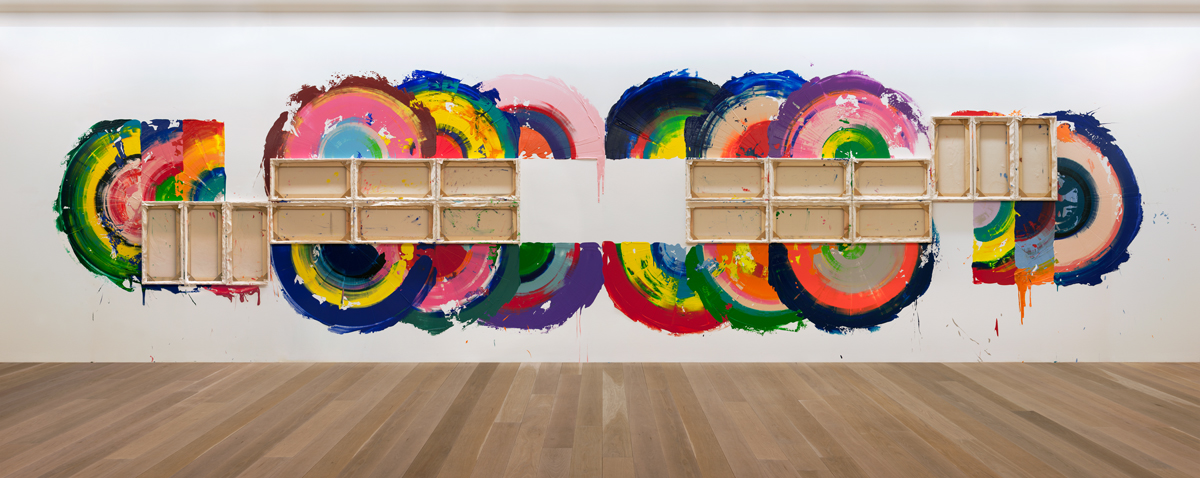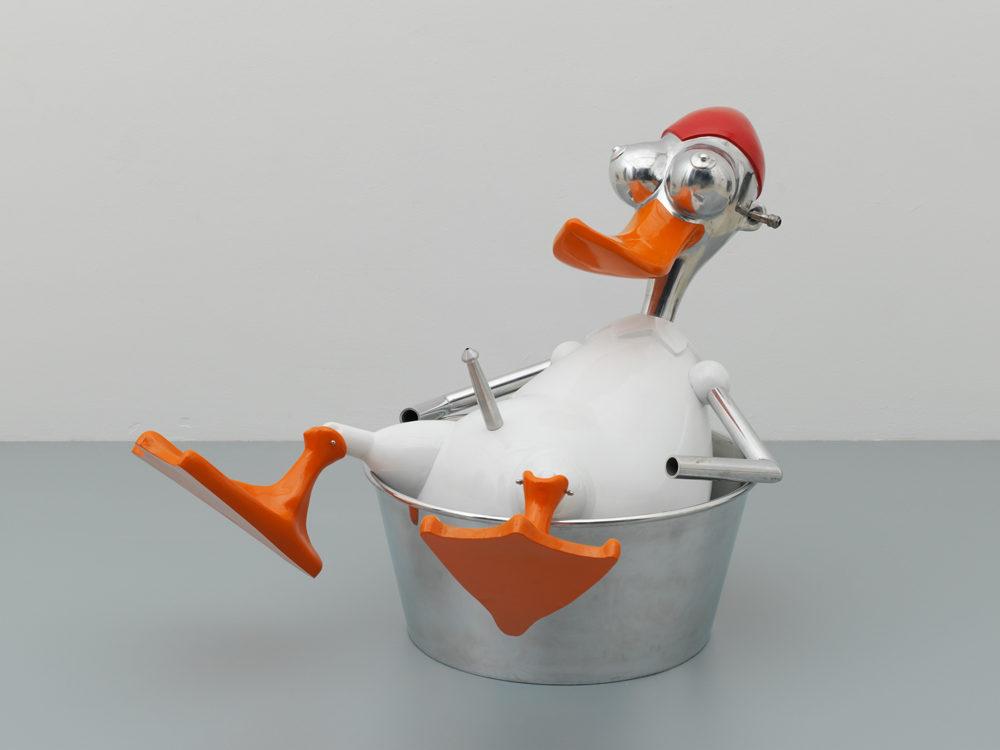ART CITIES:Paris-Richard Jackson
 In the early 1960s, at a time when Abstract Expressionism was established as the major American Art Movement, Richard Jackson decided to experiment with different ways of extending the field of painting, and to push it beyond its boundaries, styles and conventions. From 1969, Jackson produced wall paintings where canvases loaded with paint were substituted for brushes. In this way, he initiated an inventive series of inversions and dissimulations with the aim of upending technical and stylistic conventions of painting.
In the early 1960s, at a time when Abstract Expressionism was established as the major American Art Movement, Richard Jackson decided to experiment with different ways of extending the field of painting, and to push it beyond its boundaries, styles and conventions. From 1969, Jackson produced wall paintings where canvases loaded with paint were substituted for brushes. In this way, he initiated an inventive series of inversions and dissimulations with the aim of upending technical and stylistic conventions of painting.
By Efi Michalarou
Photo: Musée de l’Orangerie Archive
The installation by Richard Jackson “Paintings” inaugurates Musée de l’Orangerie’s new contemporary art room. Fascinated by the Museum’s exhibition “Water Lilies-American Abstract Painting and the last Monet”, that marks the centenary of Claude Monet’s painting “Water Lilies”, Richard Jackson presents a work in the same spirit where color, gestuality and the organic offer a joyous and offbeat interpretation of Monet’s last work. He states: “I don’t feel my work as a criticism of painting but an optimistic view of what it could be”. A pre-eminent figure in American Contemporary Art since the 1970s, Richard Jackson is influenced by both Abstract Expressionism and Action Painting, exploring a performative painting process which seeks to extend the potential of painting by upending its technical conventions. In 1970 at the Eugenia Butler Gallery in LA, Jackson created a 6 x 6 meter enclosure out of stretched canvas that he painted by sliding other wet canvases through it. The painting installation transformed illusionistic space into architectural space, and turned viewing a painting into an all-encompassing, time-based experience. Jackson first came to international attention with a major presentation of his installation works at the Menil Collection, Houston, in 1988, followed by the 1992 exhibition, ‘Helter Skelter,’ at the Los Angeles Museum of Contemporary Art. Jackson’s work is process-oriented, and the structural aspect of his installations involves a high level of craftsmanship and engineering. However, the final application of paint is generated through an automated process which Jackson calls “Activation”. He equips his “Painting machines” with a network of pipes and hoses which, when deployed, cause violent eruptions of paint that immerse the work and surrounding area. The finished installations remain in the aftermath of this extreme and unpredictable performative action. Jackson responds to the high-mindedness of painterly practice by repositioning painting as an everyday experience. For Jackson, paint is not a tool used to create a representational image, but is used as a ubiquitous liquid which is spurted, splattered and sprayed over the surface of his installations. He draws on the visual lexicon of domestic environments, universal basic human activities, and hallmarks of the quintessential American life such as hunting and sports. By harnessing this imagery and combining it with a physically laborious and conceptually rigorous artistic practice, Jackson has produced a body of work that questions and challenges the structure of the art world at large for over four decades.
Info: Musée de l’Orangerie, Jardin des Tuileries, Place de la Concorde, Paris, Duration: 6/10/18-7/1/19, Days & Hours: Mon & Wed-Sun 9:00-18:00, www.musee-orangerie.fr

